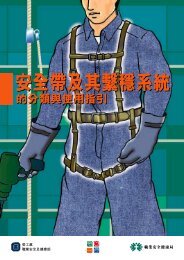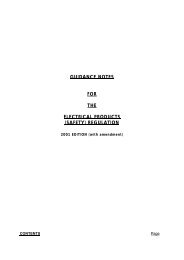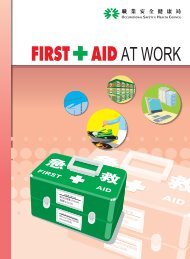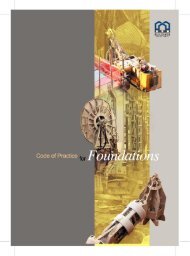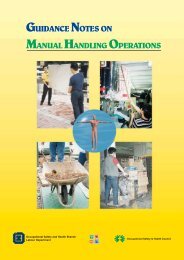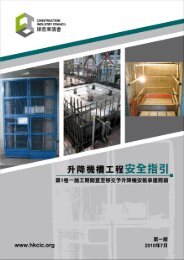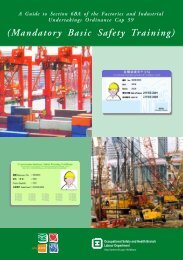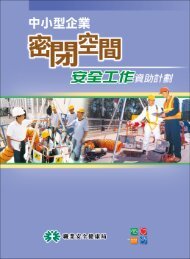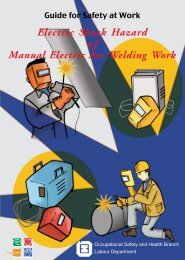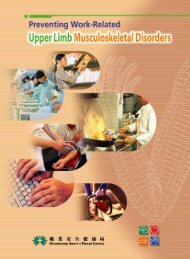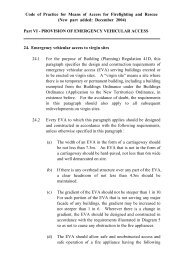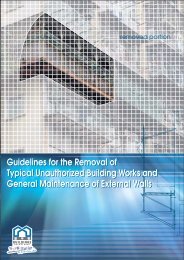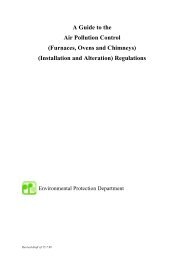Code of Practice for Safe Use and Operation of Suspended Working ...
Code of Practice for Safe Use and Operation of Suspended Working ...
Code of Practice for Safe Use and Operation of Suspended Working ...
- No tags were found...
Create successful ePaper yourself
Turn your PDF publications into a flip-book with our unique Google optimized e-Paper software.
5.10 Brakes5.10.1 Each winch, climber or other lifting appliance or similar device <strong>of</strong> thesuspended working plat<strong>for</strong>m should be provided with the following brakingsystem:(a)(b)in case <strong>of</strong> manually operated appliances or devices, an efficient brakewhich comes into operation when the operating h<strong>and</strong>le or lever isreleased; <strong>and</strong>in case <strong>of</strong> power operated appliances or devices, two independentefficient braking systems, i.e. the primary brake <strong>and</strong> the secondarybrake capable <strong>of</strong> preventing the suspended working plat<strong>for</strong>m fromfalling out <strong>of</strong> control or in a dangerous manner (regulation 11 <strong>of</strong> theSWPR).5.10.2 Where a temporary suspended working plat<strong>for</strong>m is raised or lowered bya manually operated hoist, the hoist should be designed to have:(a)(b)(c)a positive crank <strong>for</strong>ce to lift <strong>and</strong> lower the load. The maximum <strong>for</strong>ceapplied to the end <strong>of</strong> the crank or cranks <strong>for</strong> lifting the rated capacity<strong>of</strong> the hoist should not exceed 250N;an interlocking device must be provided to prevent the release <strong>of</strong>the gripping mechanism when the suspension wire rope is under aload above 2% <strong>of</strong> the maximum safe working load; <strong>and</strong>a means to prevent rapid h<strong>and</strong>le movement, fast unreeling oruncontrolled descent.5.10.3 The primary brake should :(a)(b)(c)(d)engage automatically in the event <strong>of</strong> power failure or interruption;be capable <strong>of</strong> stopping <strong>and</strong> sustaining the working plat<strong>for</strong>m evenwhen the working plat<strong>for</strong>m is overloaded by 25%:be directly coupled to the drive train <strong>of</strong> the appliance or climbingdevice <strong>and</strong> not by using belts, pins, clutches, roller chain or rollers;<strong>and</strong>be capable <strong>of</strong> being released manually in the event <strong>of</strong> a power failureor emergency. The means <strong>of</strong> releasing the brake should ensure itsimmediate reapplication as soon as the control is released.33



